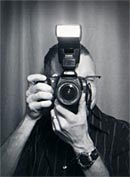Kodak's Secret Nuclear Reactor (not really)
This is making a bit of news in the "photo curiosities" world lately. I found out about it in a report by Yahoo:
How's this for a revelation: The Kodak Eastman Co. had a small nuclear research reactor in a little-known underground labyrinth at its Rochester, N.Y., facility.
And, although locked down and under tight security, it also contained 3½ pounds of highly enriched uranium, reports the the Democrat and Chronicle in Rochester. The writer succinctly notes:That's the material that nuclear bombs are made of. Terrorists covet it.
The imaging company, which has filed for bankruptcy, used the reactor to check chemicals and other materials for impurities, as well as for neutron radiography testing, the newspaper reported. The reactor, acquired by the company in 1974, was about the size of a refrigerator and kept in a 14- by 24-foot cement-lined cavity dug below a basement of one of its research buildings.
"This device presented no radiation risk to the public or employees," company spokesman Christopher Veronda told the newspaper. "Radiation from the operation was not detectable outside of the facility."
Kodak didn't necessarily mean to keep the reactor a secret, the newspaper reported. Rather, it was just never truly public knowledge.
Although it had been mentioned in research papers, Veronda told the newspaper, the company never made a public announcement about it. And he wasn't sure the company ever notified local police, fire or hazardous materials officials that it possessed the reactor.
The newspaper acknowledged it learned of the reactor when a Kodak employee mentioned it.
As for the uranium, it is no longer at the facility. It has been shipped to a federal facility in South Carolina, the newspaper reported.

Eastman Kodak Co.'s californium neutron flux multiplier, known as a CFX, which it acquired in 1974,
in a photo found among Nuclear Regulatory Commission findings.








